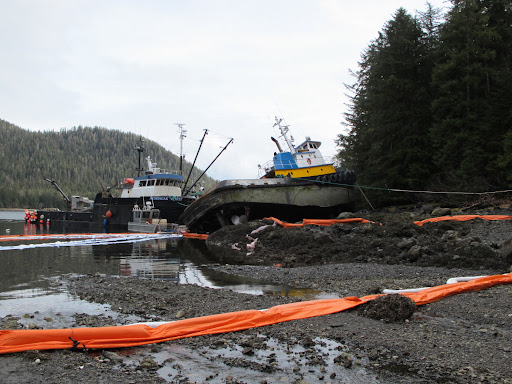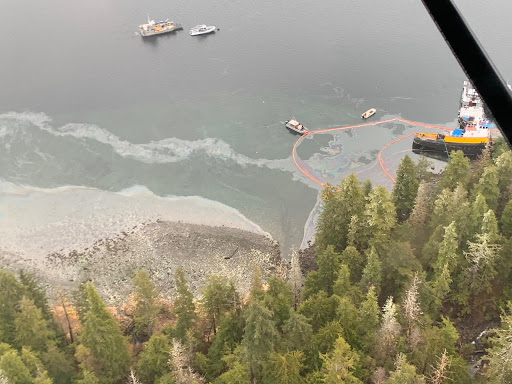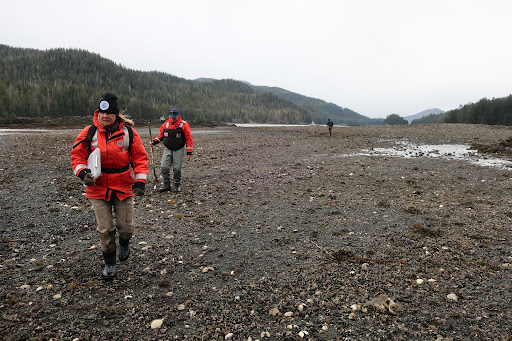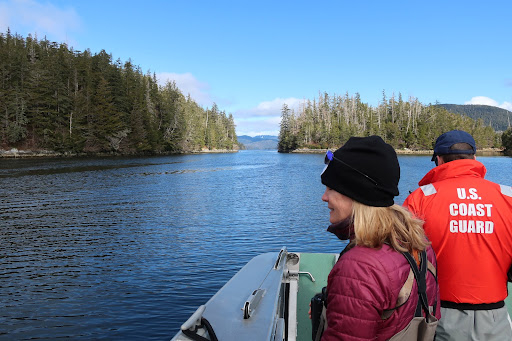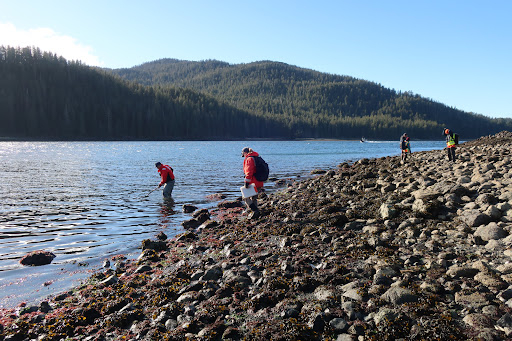 NOAA’s Office of Response and Restoration (OR&R) supports a robust blue economy — the sustainable use of ocean resources for economic growth, improved livelihoods and job creation. A holistic approach to this economy embraces its growth and use of ocean resources in a sustainable manner that is equitable and supports human well-being. And often, it means incorporating traditional knowledge and information into Western science.
NOAA’s Office of Response and Restoration (OR&R) supports a robust blue economy — the sustainable use of ocean resources for economic growth, improved livelihoods and job creation. A holistic approach to this economy embraces its growth and use of ocean resources in a sustainable manner that is equitable and supports human well-being. And often, it means incorporating traditional knowledge and information into Western science.
Supporting the blue economy includes helping ensure resilience in fishing or shellfish harvesting. When accidents happen at sea, and oil or other pollutants are spilled, OR&R supports the U.S. Coast Guard by providing scientific and technical information to help manage the spill impacts. Ensuring resilient fisheries in Alaska is particularly important, because Alaska produces more seafood than all other U.S. states combined and provides two-thirds of the nation’s wild-caught fish and shellfish. In 2019, the Alaska seafood industry employed 62,200 workers annually, statewide, and contributed $5.7 billion to Alaska’s economy.
This inter-agency collaboration to provide economic and community resilience was on display earlier this year when OR&R supported the response to an oil spill in Alaska that threatened the subsistence and commercial harvest of herring roe. To understand the importance of an effective response, let’s look at how the Indigenous people of Alaska harvest and depend on roe as part of their culture and economy.
Harvesting the Roe

Each spring, the Indigenous people of Sitka and southeast Alaska regions wait patiently for the return of the herring to Sitka Sound. It’s a time of excitement as they gear up for their annual trip to Sitka for the herring egg harvest. Herring is a traditional food, so some of the harvested herring roe is distributed to elders and other tribal members, as well as stored for future gatherings and ceremonial events.
Each year, the herring return to the sound, usually around the end of March. Some signs that the herring are back might be the whales surfacing just off shore, the large groups of seals and sea lions congregating, or the flocks of birds, all feasting upon this small fish. Although smaller spawning events do occur around many Southeast communities, Sitka has historically been the herring egg “capital” of the Southeast.
Most of the harvest is done by small, family operations that undertake a subsistence ritual each year, although some is done by commercial operations that sell to Asian markets. Almost everyone who harvests eggs from Sitka Sound shares them. Sometimes it’s with family or neighbors within Sitka; sometimes it’s shipping eggs to family or trading partners around the state or across the country.
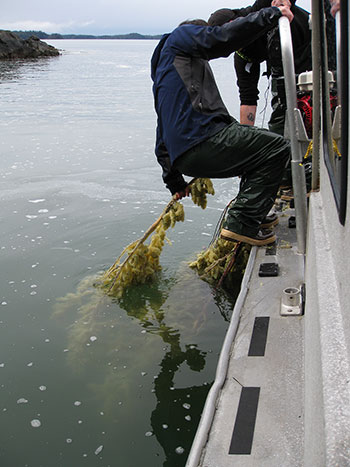
The eggs that herring release are sticky, so they adhere to whatever substrate is immediately available, natural or man-made. Harvesters take advantage of this characteristic, using one of two main methods for harvesting. One is to harvest naturally occurring seaweed, upon which herring eggs have been deposited. The other, more heavily-used method is to place something in the water, usually freshly cut hemlock trees or branches, for the herring eggs to stick to. Just prior to the spawning event, harvesters select trees or branches and prepare them for setting. Once set, branches are strung together with rocks to anchor them, and perhaps a buoy to mark them.
The most active harvesters have everything prepared in advance of the spawn and spend time checking on the herring schools and monitoring any spawning activity. This way, when herring milt (male roe) fills the bays in Sitka Sound and turns the waters milky-white, the harvesters are ready to go. Their sets can range from just a few branches for a low-level harvester, to as much as 60 for an active harvester who supplies eggs to many. Once there are enough eggs in place, the branches are hauled onto the boat and brought back to shore for processing. Historically, herring eggs were air-dried or salted to preserve them for use throughout the year, but now, freezing is the main preservation method.
Protecting the Harvest When a Spill Happens
As specialists in the science of oil spills, one of the important questions that OR&R scientists consider when oil spills into coastal environments is “What will it hurt? What resources (biological, human-use/socio-economic, or sensitive shoreline types) are at risk from the spill?”
The people of Sitka Sound prize herring for its value as a vital, traditional food supply, its cultural significance, and as a sustainable, culturally-rich use of a local resource. All of this was at risk when an oil spill threatened a herring roe season in Alaska in early 2022.
It was on March 21, 2022 that the 83-foot tug Western Mariner experienced a steering failure in Neva Strait, north of Sitka Sound, and was forced hard aground after being hit by the 286-foot containerized freight barge it was towing. The tug, containing 45,000 gallons of diesel, began leaking upon running aground, gradually discharging more than 5,300 gallons of fuel into the Neva Strait waterway.
At the request of the Coast Guard, the OR&R response team provided oil trajectories and oil fate analysis to learn where the oil could go and how it might behave in the water. OR&R personnel reported on-scene, while continuing to produce trajectories, weather forecasts, and resources-at-risk analysis. OR&R assisted the response team with shoreline assessments of environmentally sensitive areas (identified by local stakeholders to be at risk) to assess oil impacts. (More information is available on OR&R’s IncidentNews website.)
Among the resources-at-risk identified by the response team was the harvest of herring and herring roe. Because the incident occurred just ahead of the herring season, Alaska Department of Fish and Game flew over the spill area in Neva Strait on March 25 to observe the presence of sheen, conduct herring surveys, and note any instances of wildlife in the overflight zone. Due to the spread of the fuel, and consistent with the State of Alaska’s zero-tolerance policy with respect to fuel contamination of seafood, Alaska Department of Health and Social Services and the Alaska Department of Environmental Conservation (ADEC) issued a seafood safety advisory for harvest and consumption of those resources.
As of May 5, 2022, some shorelines in Neva Strait had still not met the cleanup endpoint criteria and are still considered contaminated. The ADEC continues to recommend that harvesters pay particular attention in Neva Strait and Saint John Baptist Bay; to not eat any harvested food if you see, smell, or taste oil on it; and to avoid setting gear or harvesting wherever oil and/or sheens can be smelled on the beach or water. Additional shoreline surveys are scheduled to be conducted on contaminated beaches in March of 2023 to see if recovery has naturally occurred over the winter.
The ocean, a provider of sustenance and wellbeing, is integral to the lifeways of Alaska and coastal tribes. Alaska’s fishing industry will continue to thrive in the coming years, with current outlooks estimating a consistent trend of contributing billions of dollars to the U.S. economy. When oil or hazmat spills occur, NOAA and OR&R will continue to engage with tribal governments and organizations to learn their concerns and determine whether Alaska’s blue economy is threatened due to a spill.

